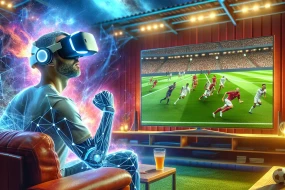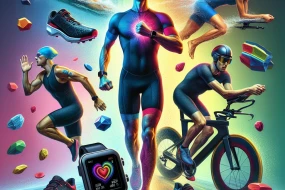
In the world of sports, where every second counts and performance is everything, predicting injuries is like having a crystal ball. But what if I told you that crystal ball is now powered by artificial intelligence? Welcome to the future of sports medicine, where AI is changing the game by offering insights that were once the stuff of science fiction. In this article, we'll explore how AI is stepping onto the field, helping athletes stay in peak condition, and what it means for the future of sports.
The Rise of AI in Sports Medicine
Artificial Intelligence has been making waves across various industries, and sports medicine is no exception. The ability to predict injuries in athletes is a game-changer, offering a proactive approach to health management. By analyzing vast amounts of data, AI can identify patterns and correlations that human eyes might miss. This capability is invaluable for coaches, trainers, and medical professionals who aim to optimize athlete performance and longevity.
Consider this: an NBA team uses AI to track player movements, muscle strain, and even sleep patterns. By doing so, they can predict the likelihood of injury and adjust training programs accordingly. This isn't just about preventing injuries; it's about enhancing performance and extending careers.
How AI Works in Predicting Injuries
So, how does AI predict injuries? At its core, AI utilizes machine learning algorithms to process data collected from various sources such as wearables, game footage, and medical records. These algorithms learn from the data, recognizing patterns that correlate with injury risk.
For example, AI can analyze the biomechanics of a soccer player's kick. If the data suggests an increased risk of hamstring strain, the coaching team can modify the player's training regimen to mitigate the risk. This predictive capability allows for targeted interventions, reducing the chances of injury before it occurs.
Real-World Applications and Success Stories
The practical applications of AI in sports are both impressive and inspiring. Take, for instance, the work done by the English Premier League. Teams have started using AI to monitor players' physical conditions, leading to a significant drop in injury rates. Similarly, in Major League Baseball, AI is used to analyze pitchers' arm motions, predicting potential injuries with remarkable accuracy.
Another fascinating example comes from the world of marathon running. AI systems analyze runners' gait and fatigue levels, offering insights that help coaches tailor training programs to individual athletes. This personalized approach not only reduces injury risk but also enhances overall performance.
Challenges and Limitations
While the benefits of AI in predicting sports injuries are clear, it's not without its challenges. One major hurdle is data privacy. The collection of personal health data raises concerns about how this information is used and who has access to it.
Moreover, AI predictions are not infallible. There's a risk of over-reliance on technology, potentially leading to complacency in traditional coaching methods. It's crucial to strike a balance between AI insights and human expertise, leveraging technology as a tool rather than a replacement.
The Future of AI in Sports
Looking ahead, the role of AI in sports is poised to expand even further. As technology advances, the accuracy and scope of injury predictions will only improve. We can expect AI to play a pivotal role in developing personalized training programs, rehabilitation plans, and even nutrition strategies.
Imagine a future where AI not only predicts injuries but also suggests optimal recovery protocols, tailored to each athlete's unique physiology. This level of precision and personalization could revolutionize the way we approach sports medicine, making injuries a rare occurrence rather than an inevitability.
Common Mistakes to Avoid
1) Over-reliance on AI: While AI offers incredible insights, it's essential to remember that it's a tool, not a cure-all. Human judgment and experience remain vital.
2) Ignoring data privacy: With great power comes great responsibility. Ensure that data collection complies with privacy regulations and that athletes are aware of how their data is used.
3) Neglecting traditional methods: AI should complement, not replace, traditional coaching techniques. The human touch is irreplaceable in sports.
4) Failing to update systems: AI technology evolves rapidly. Keeping systems updated is crucial for maintaining accuracy and relevance.
5) Misinterpreting AI data: Data requires context. Misinterpretation can lead to incorrect conclusions, so always consider AI insights alongside expert analysis.






























